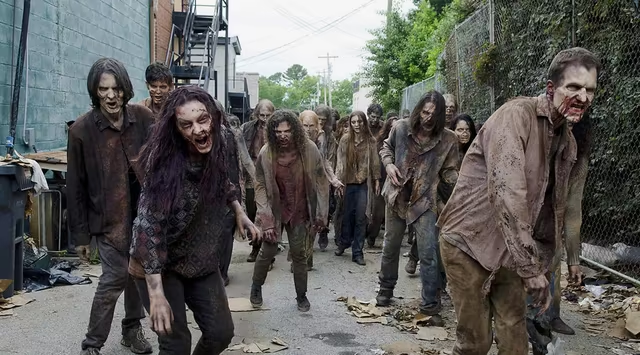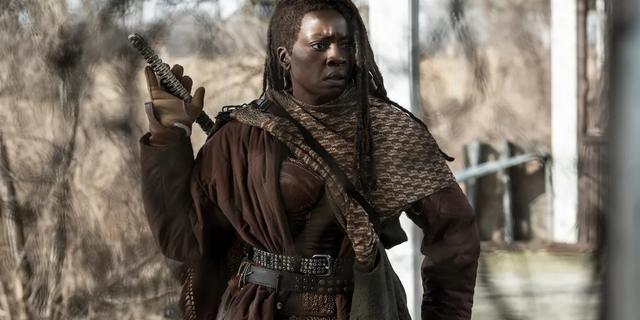If you click on a link and make a purchase we may receive a small commission. Read our editorial policy.
As Marvel's Judgment Day continues, let's look back at the Justice League's early 1990s story of the same name
Before the Eternals, X-Men, and Avengers crossed paths, it was the Justice Leagues America, International, and Task Force that faced judgement

Apparently, when last addressing the excitement surrounding the summer comic book event Judgment Day, I made the mistake of writing about the wrong Judgment Day; I was informed after the event that, in fact, the Judgment Day that everyone is buzzing about is actually an American crossover event centering around the collision between three different superhero teams. I apologize for the error, and will now correct it by writing about the correct Judgment Day.
The Context
1994’s Judgment Day – which ran across two issues apiece of Justice League America, Justice League Task Force, and Justice League International – is, if anything, even more of an oddity to read close to 30 years later than it was at the time it was published. It was intended as an attention-grabbing storyline that would redefine the line moving forward and give new energy to the Justice League books and characters at a time when the newly-formed Image Comics was the dominant market force, offering fans something more dynamic, kinetic, and glamorous than what they were used to in their superhero reading.
The shadow of Image falls across the entire storyline — or, more appropriately, the idea of Image as seen by creators decidedly outside of Image’s target audience does. I don’t just mean that in visual terms, although there’s certainly little other explanation for Marc Campos’ overly busy style if not an attempt to capture some of the appeal of the first couple of waves of Hot Image Talent. Campos takes on the JLA issues in the storyline; Task Force retains longtime series artist Sal Veluto, while the underrated Chuck Wojtkiewicz illustrates JLI. Wojtkiewicz, too, displays contemporary influences in his work, but it’s the clarity and physicality of early Mike Weiringo, who at the time had just broken through on The Flash, rather than the rendering-heavy Image Comics style. All three different artists working on the same story makes for a dizzying, awkward combination that, despite best intentions, never quite works. The same could be said about the storyline as a whole.

The Disappointment
To summarize the plot of Judgment Day in any detail would likely be as confusing an exercise as reading the real thing. There is a clear concept at the story’s center — forgotten supervillain The Overmaster returns, now significantly overpowered, to hold the world to ransom, and the combined three Justice League teams stand against him despite others pleading for them not to — but everything surrounding it is alternately nonsensical, ridiculous, overly dramatic, or some combination of the three. This is a story in which one character dies off-panel only to return in the very next installment because the Overmaster has somehow suspended any new births and deaths across the entire planet… a fact that somehow doesn’t prevent an entirely different hero from being killed in front of our eyes before the suspension has been lifted two issues later. (You might ask just how the Overmaster has suspended both life and death, and what that actually means, anyway. It’s a good thing you’re asking, because the story sure doesn’t.)
Everything in Judgment Day is built to deliver self-consciously shocking moments intended to demonstrate that the story isn’t playing around, man, even as the story fails to actually explore the meaning or consequence of almost any of these moments, undercutting them entirely and pretty much living up to the definition of 'playing around.'
Take, for example, the journey that Booster Gold goes on. He starts off the story convinced that his knowledge of future events — he is, after all, originally from the 25th century — will protect him as he leads the initial charge against the Overmaster… only to discover that his version of history was wrong for some never-explained reason, a fact that not only leads to his right arm being severed, but his apparent death. Except death is off the table, thanks to the Overmaster, and he returns entirely energized and ready for a fight to the finish with a cybernetic arm and a kick-ass new attitude where he’s ready to be a hero, finally, because I guess that everything else he’d done to that point wasn’t heroic enough. Does he die when the freeze on death is removed? Of course not — a life-support system in his new armor keeps him alive, because now he’s Iron Man, I mean, the new Booster Gold!
Similarly, Judgment Day also introduces the League Busters, a team seemingly put together by none other than Maxwell Lord himself on behalf of the United Nations years before his heel turn into permanent bad guy status. Indeed, at this point, Lord was the UN liaison for the League itself. So… why did he put together a team with the express purpose of taking down the League? Who knows! Led by Peacemaker, who now uses something called the Meta-Gun that maybe possibly depowers its targets temporarily — again, it’s never really explained — the team consists of Chromax, Spellcaster, Mirror Master, and Ultraa, only one of whom would ever appear in a comic again. (Spoilers: it’s not Mirror Master, who seemingly had no relation to the Flash villain of the same name, inexplicably.) Unsurprisingly, the League Busters as a concept wasn’t one that would ever resurface after their half-issue appearance.

Of all the characters done dirty by Judgment Day, none suffer as badly as Tora Olafsdotter, better known as the shy, reserved Ice. In a story where characters bickered, grimaced, and shouted at friends for seemingly little reason beyond a need for conflict, Ice stands out for a five-issue arc that sees her turn on her friends after seeing visions of her family yelling at her for not being angry enough, before getting a power upgrade and perhaps a little brainwashing from the Overmaster — again, it’s never actually explained fully, merely suggested as a possibility — and kidnapping her best friend, Fire.
She eventually sees the error of her ways thanks to the least convincing motivational speech in history — why does the Martian Manhunter’s plea to her humanity and kindness work when her best friend’s attempt to do the same thing failed earlier that issue? (I suspect the answer is, 'because the plot demanded it') — before turning on the Overmaster herself and getting killed for doing so, despite the fact that there is no death anymore, something that is mentioned as still being the case in the very next issue. She dies, even though it’s literally impossible according to the story’s own rules, because writers needed to raise the stakes heading into the final episode, no matter what. Poor Tora.
Everything ends well, of course. Blue Beetle saves the day by rewiring the Overmaster’s space ship so that it implodes, and the League is left to reconsider its actions and prepare for a line wide relaunch in the wake of the upcoming Zero Hour crossover. Life continues for everyone except Ice, and no-one is any worse for the experience except for the reader, who’s had to survive six issues of this nonsense.
The 'Impact'
I love the Justice League wholeheartedly. It’s one of my favorite comic book concepts, and I’ve been reading the series — in whatever incarnation it exists in — pretty faithfully since the mid-1980s and the Detroit League era, so trust me when I say that Judgment Day very well might be the low point for the League as a whole, as a bunch of talented creators (beyond the artists I named before, this story was written by Dan Vado, Gerard Jones, and Mark Waid) lost sight of what makes the concept work in favor of trying to twist it into something closer to the flavor of the month. Even on its own terms, it feels rushed and confusing and just simply doesn’t work on almost any level.
Better things were around the corner for the League, thankfully — Grant Morrison and Howard Porter’s relaunch was just a handful of years away — but, in retrospect, that was almost inevitable. Judgment Day was little more than a series of lapses in the judgment of everyone involved.
Inside the Judgment Day event brewing between Avengers, X-Men, and Eternals with Kieron Gillen
Follow Popverse for upcoming event coverage and news
Find out how we conduct our review by reading our review policy
Let Popverse be your tour guide through the wilderness of pop culture
Sign in and let us help you find your new favorite thing.
















Comments
Want to join the discussion? Please activate your account first.
Visit Reedpop ID if you need to resend the confirmation email.